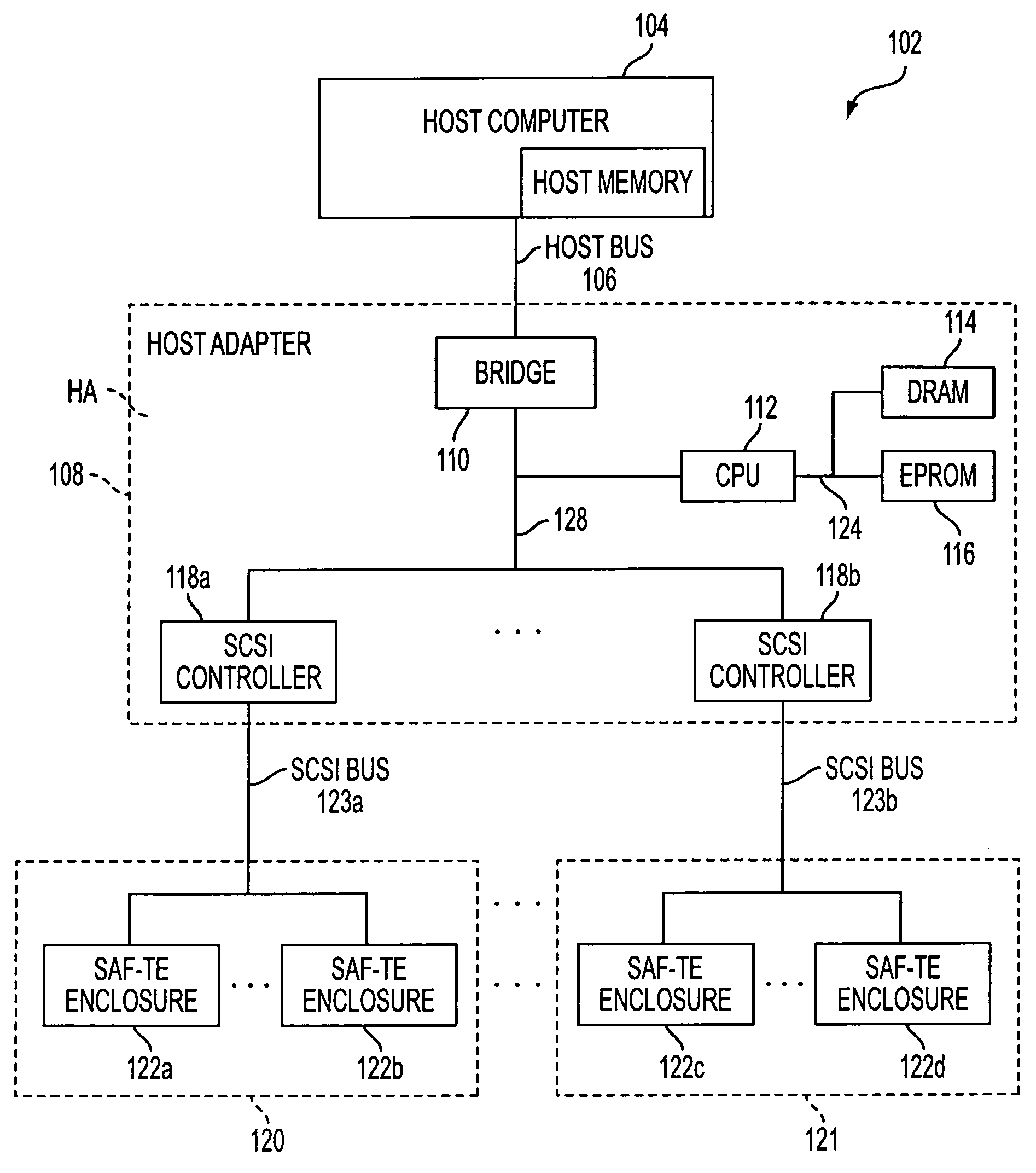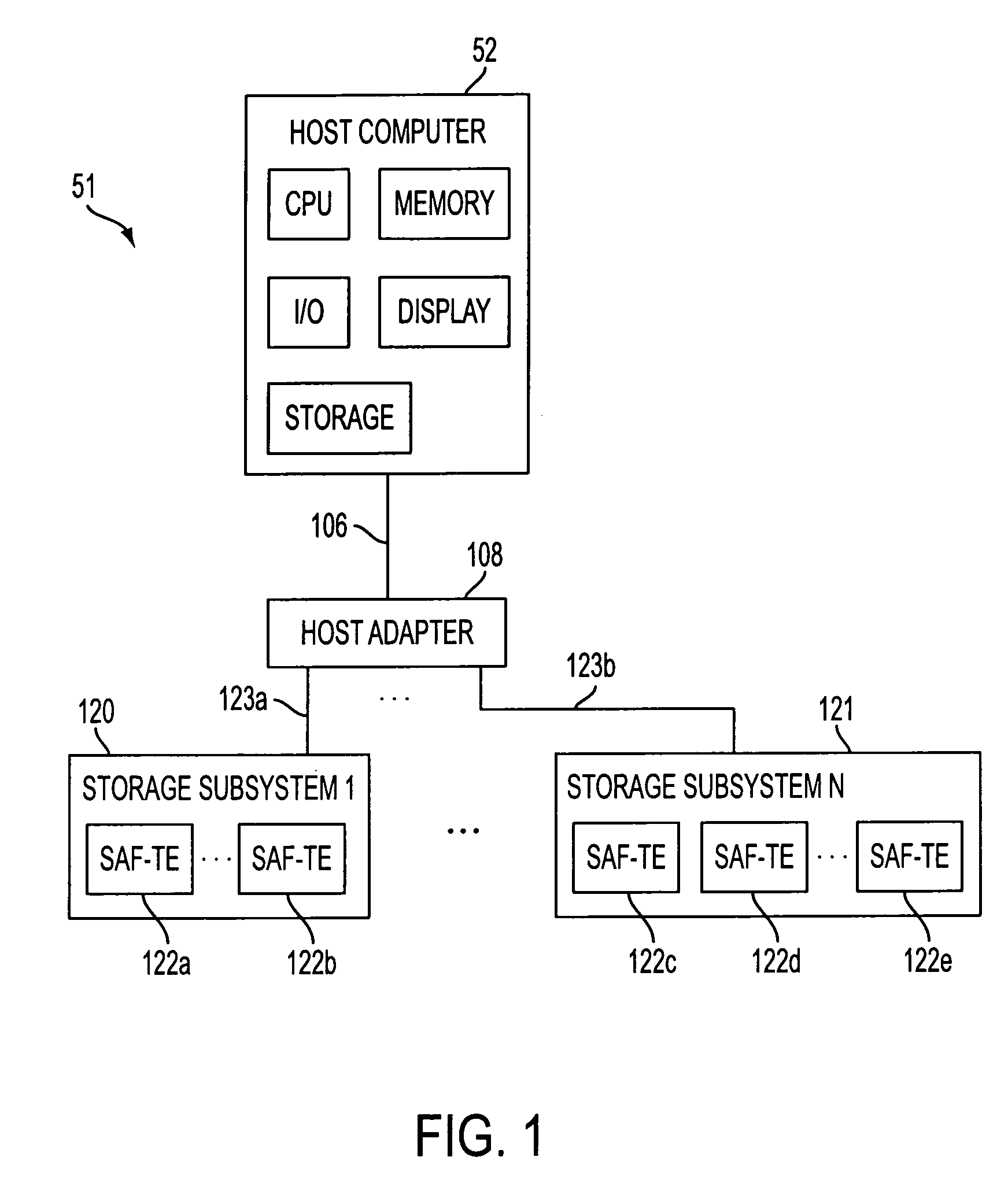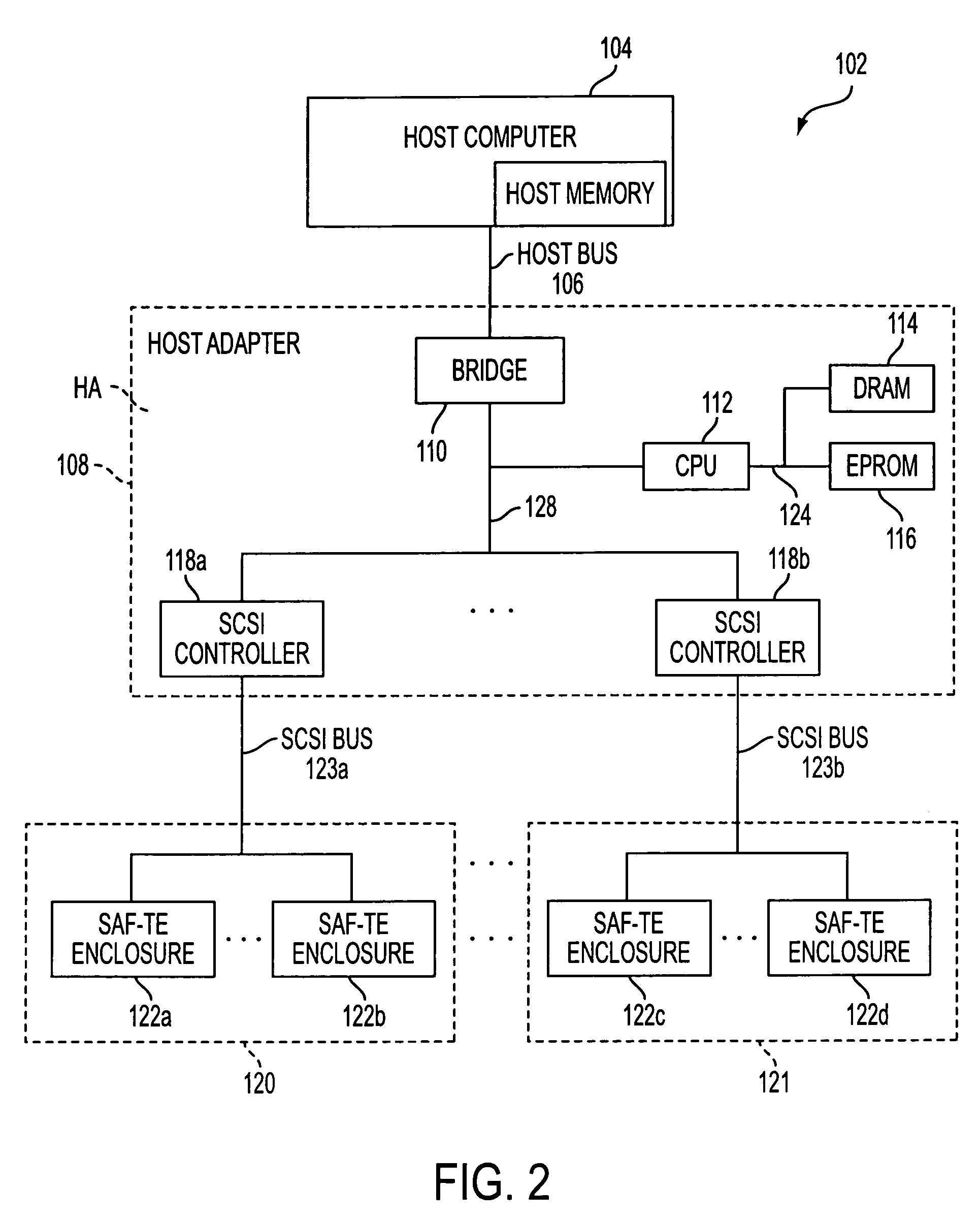Method and structure for efficiently retrieving status for SCSI accessed fault-tolerant enclosure (SAF-TE) systems
a fault-tolerant enclosure and status technology, applied in error detection/correction, instruments, digital computers, etc., can solve the problems of increasing the number of required saf-te enclosures for each, affecting the performance of the host system, and affecting the efficiency of the status retrieval. achieve the effect of maintaining backward compatibility, maintaining compatibility with existing hardware, and negligible host system performance impa
- Summary
- Abstract
- Description
- Claims
- Application Information
AI Technical Summary
Benefits of technology
Problems solved by technology
Method used
Image
Examples
Embodiment Construction
[0039]With reference to FIG. 1, there is illustrated an embodiment of an inventive computer system 51 having a host computer 52, a host adapter 108 coupled to the host computer by a host bus 106, and a plurality of data storage subsystems 120 each including one or more SAF-TE enclosures 122 coupled to the host adapter (HA) 108 by an appropriate communications link or bus 123. In the embodiment described here, the bus 123 is a SCSI bus and several versions of SCSI are currently supported, including SCSI-I, SCSI-2, SCSI-3, and the like. Furthermore, the various buses identified here, including the HA-to-SAF-TE physical link may be either wire (e.g. copper wire) or fibre. It should be understood however, that the invention should not be limited to only SCSI protocol, or SCSI busses, and that the inventive structure and method may be applied to other architectures and communication protocols.
[0040]For example, the inventive structure and method may be used for fibre-channel based system...
PUM
 Login to View More
Login to View More Abstract
Description
Claims
Application Information
 Login to View More
Login to View More - R&D
- Intellectual Property
- Life Sciences
- Materials
- Tech Scout
- Unparalleled Data Quality
- Higher Quality Content
- 60% Fewer Hallucinations
Browse by: Latest US Patents, China's latest patents, Technical Efficacy Thesaurus, Application Domain, Technology Topic, Popular Technical Reports.
© 2025 PatSnap. All rights reserved.Legal|Privacy policy|Modern Slavery Act Transparency Statement|Sitemap|About US| Contact US: help@patsnap.com



